Windsor Alternatives
Considering a switch from Windsor? This guide offers a detailed comparison of 10 alternative platforms to help you make an informed decision.
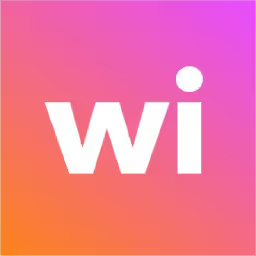
Windsor.ai is a popular tool for a reason. It’s great at pulling all your marketing, CRM, and analytics data into one spot. Users often highlight its easy integrations and helpful customer support, which simplifies getting a unified view of performance metrics.
But like any tool, it has some limitations. Some users mention a difficult learning curve or missing features. We’ve analyzed the top alternatives based on G2 reviews to help you find the right fit for your needs. Let's get started.
11x: Digital Workers for Sales Teams
If your sales team explores digital workers, consider 11x. The platform provides autonomous agents for tasks like lead research and data entry. It helps sales operations automate repetitive functions so staff can focus on deal closure.
11x is a go-to-market platform that uses AI agents to manage sales functions. Its agent, Alice, finds prospects, runs outreach on email and LinkedIn, and keeps the CRM current.
A second agent, Julian, qualifies inbound leads and books meetings. The platform unifies data enrichment, outreach, and email warmup tools, so separate point solutions are not required.
Windsor Alternatives
This section breaks down the top Windsor alternatives. We examine each tool's pricing and features, and compare its benefits and potential drawbacks to Windsor.
1) Vidyard
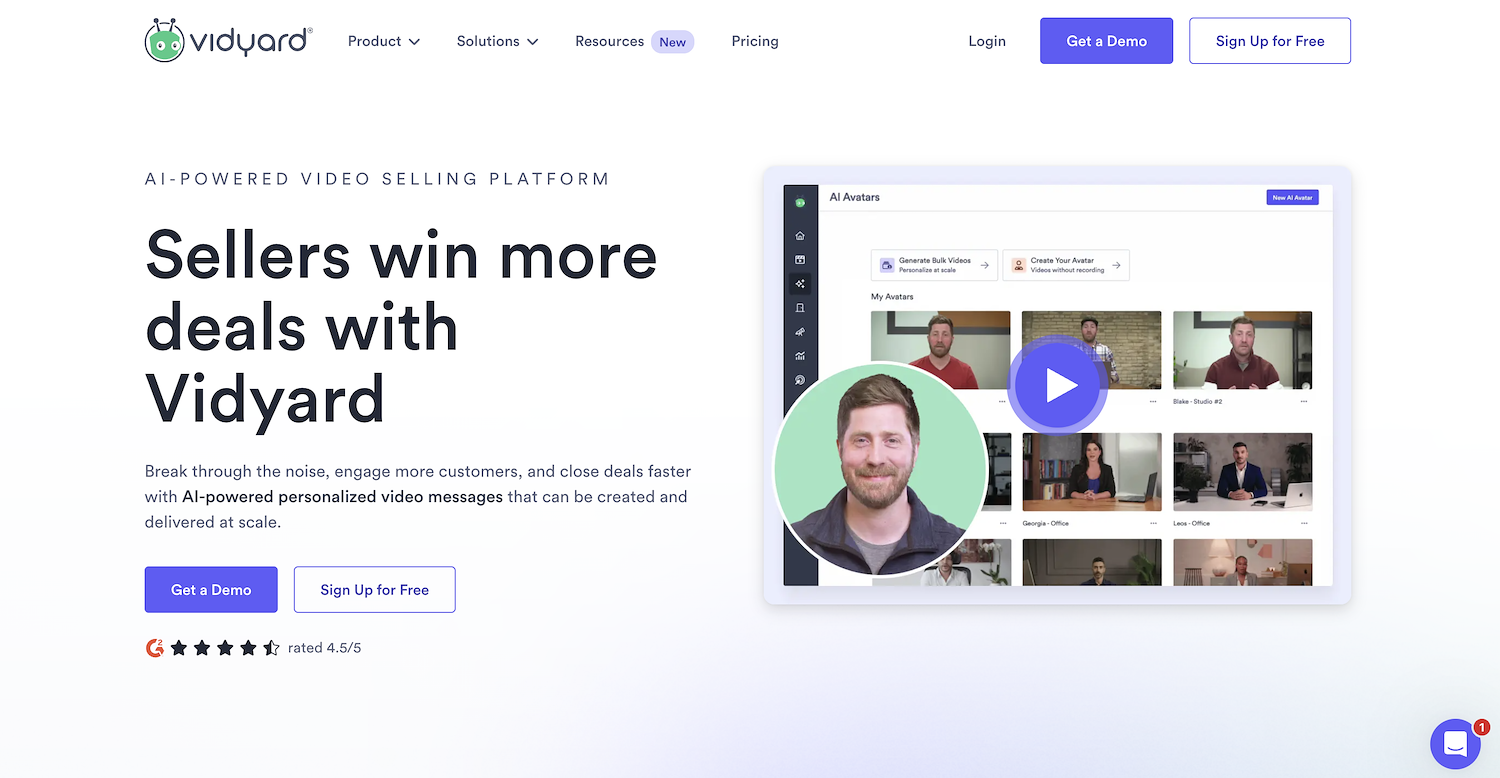
Vidyard is an AI-powered video platform for revenue teams. It helps users create, personalize, and track video messages at scale to engage prospects and close deals. The platform assists with sales outreach, internal communications, and lead conversion.
It provides a video agent for automated messages, detailed analytics on viewer engagement, and a central library for all video assets. The tool connects with CRMs like Salesforce and HubSpot.
Vidyard's Main Features
- Provides an AI-powered video agent that automatically sends personalized videos and automates repetitive sales workflows.
- Allows users to record and send personalized videos with access to detailed viewer analytics and central governance for messaging.
- Offers a central library to host, organize, and track video assets, which includes real-time engagement analytics and automated follow-up triggers.
- Connects natively with CRMs and sales tools like Salesforce and HubSpot, pushing engagement data directly into those platforms.
How Vidyard Compares to Windsor
Average Review Score: 4.5/5 stars based on 808 G2 reviews.
- Vidyard's core function is to create and host videos for sales teams, a different approach from Windsor's focus on data aggregation from marketing.
- It includes an AI video agent that automates personalized video messages, a feature not present in Windsor's data-centric platform.
- The platform provides detailed analytics on video viewer engagement, which gives more specific content insights than the broad performance metrics Windsor compiles.
- While both integrate with CRMs, Vidyard sends video interaction data to the CRM, whereas Windsor pulls data from multiple sources into its own dashboard.
Vidyard's Limitations Compared to Windsor
Vidyard centers on video performance metrics and does not offer broad data aggregation. Windsor, in contrast, pulls marketing, CRM, and analytics data into a single, unified dashboard for a complete overview.
The platform's purpose is video creation and sharing, not multi-channel data analysis. This specific focus might be a limitation for teams that require a complete view of marketing performance, which Windsor provides.
While Vidyard integrates with CRMs, it mainly sends video engagement data to them. It does not pull and consolidate performance data from various sources into one place as Windsor does.
Pricing and Cost-Effectiveness
Both tools offer a free plan. Windsor's paid plans start with the Basic tier at $19 per month, while Vidyard's Starter plan is $59 per user per month. Windsor's pricing scales with data sources, whereas Vidyard's is user-based, making Windsor a more cost-effective option for larger teams.
2) Loom
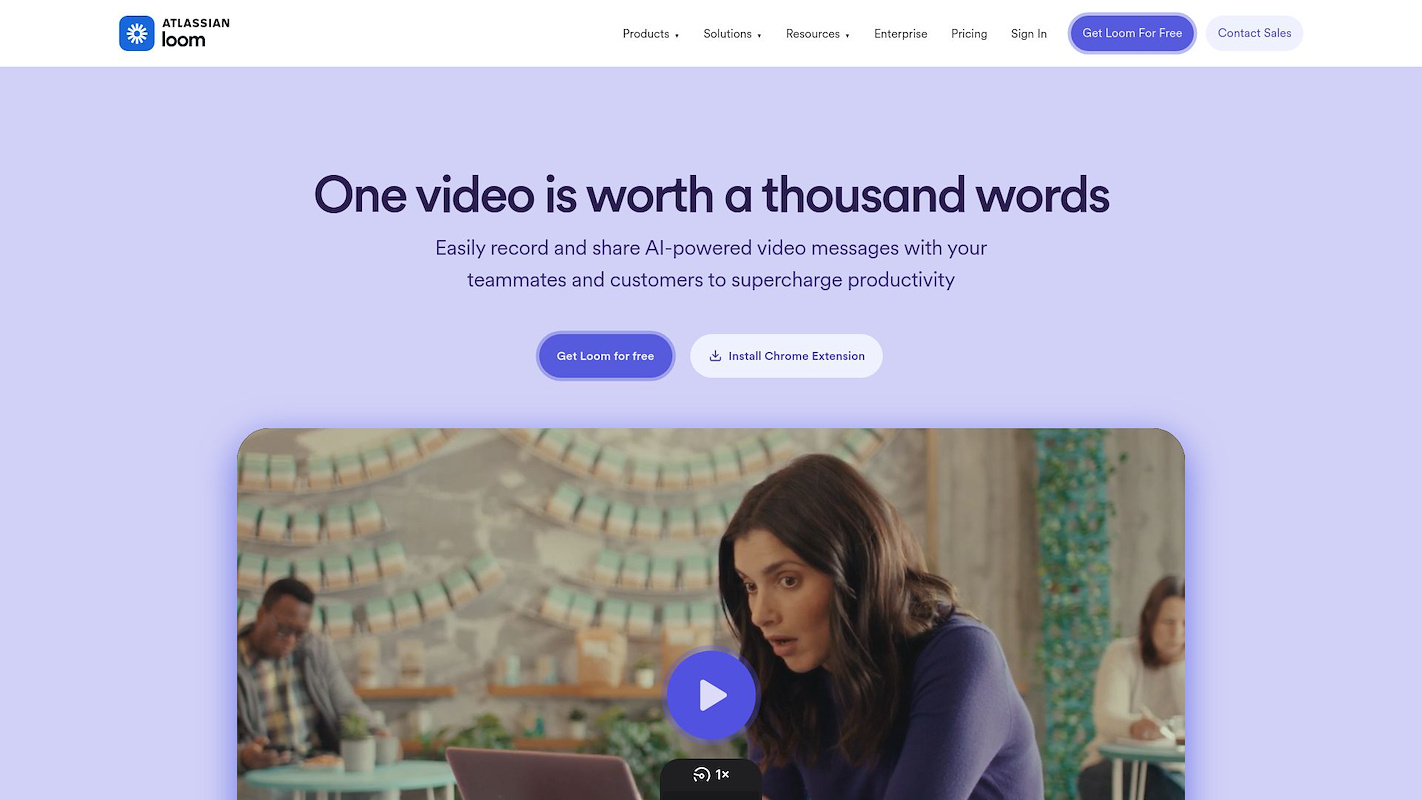
Loom is a video messaging platform to record a screen, camera, or both. Users share videos to replace long emails. Sales teams personalize outreach, and an enterprise edition offers secure, large-scale administration. Engineering uses it for code reviews and support for troubleshooting.
Loom's Main Features
- Records the screen and camera on desktop, mobile, and Chrome extensions.
- Uses AI to automatically enhance videos and convert scripts into documents or messages.
- Provides viewer engagement tools, including comments, calls-to-action, and captions in over 50 languages.
- Includes a video editor to trim clips, add custom backgrounds, and apply text or arrow overlays.
How Loom Compares to Windsor
Average Review Score: 4.7/5 stars based on 2,119 G2 reviews.
- Loom focuses on video messaging to replace long emails and meetings, which is different from Windsor's function of pulling marketing data into one dashboard.
- It uses AI to generate video transcripts and captions in over 50 languages, a feature not available in Windsor's data-centric platform.
- The platform includes a video editor to trim clips and add custom backgrounds, whereas Windsor is an analytics tool without video creation functions.
- Users get detailed viewer engagement analytics, such as comments and calls-to-action, offering more specific insights than the broad metrics Windsor provides.
Loom's Limitations Compared to Windsor
- Loom does not offer broad data aggregation from different marketing channels. Windsor, in contrast, pulls marketing, CRM, and analytics data into one dashboard for a complete performance overview.
- The platform lacks marketing attribution models. Unlike Loom, Windsor connects campaign data to revenue, which helps teams measure the financial impact of their marketing efforts.
- Its purpose is video communication, not multi-channel data analysis. This specific focus can be a drawback for teams that need the comprehensive marketing performance view that Windsor provides.
Pricing and Cost-Effectiveness
Both tools offer free plans, but their paid models diverge: Windsor starts at $19 per month based on data sources, while Loom's Business plan is $15 per user per month. This makes Windsor more cost-effective for large teams, whereas Loom's per-user model better suits smaller ones; check Loom's official website for details.
3) BombBomb
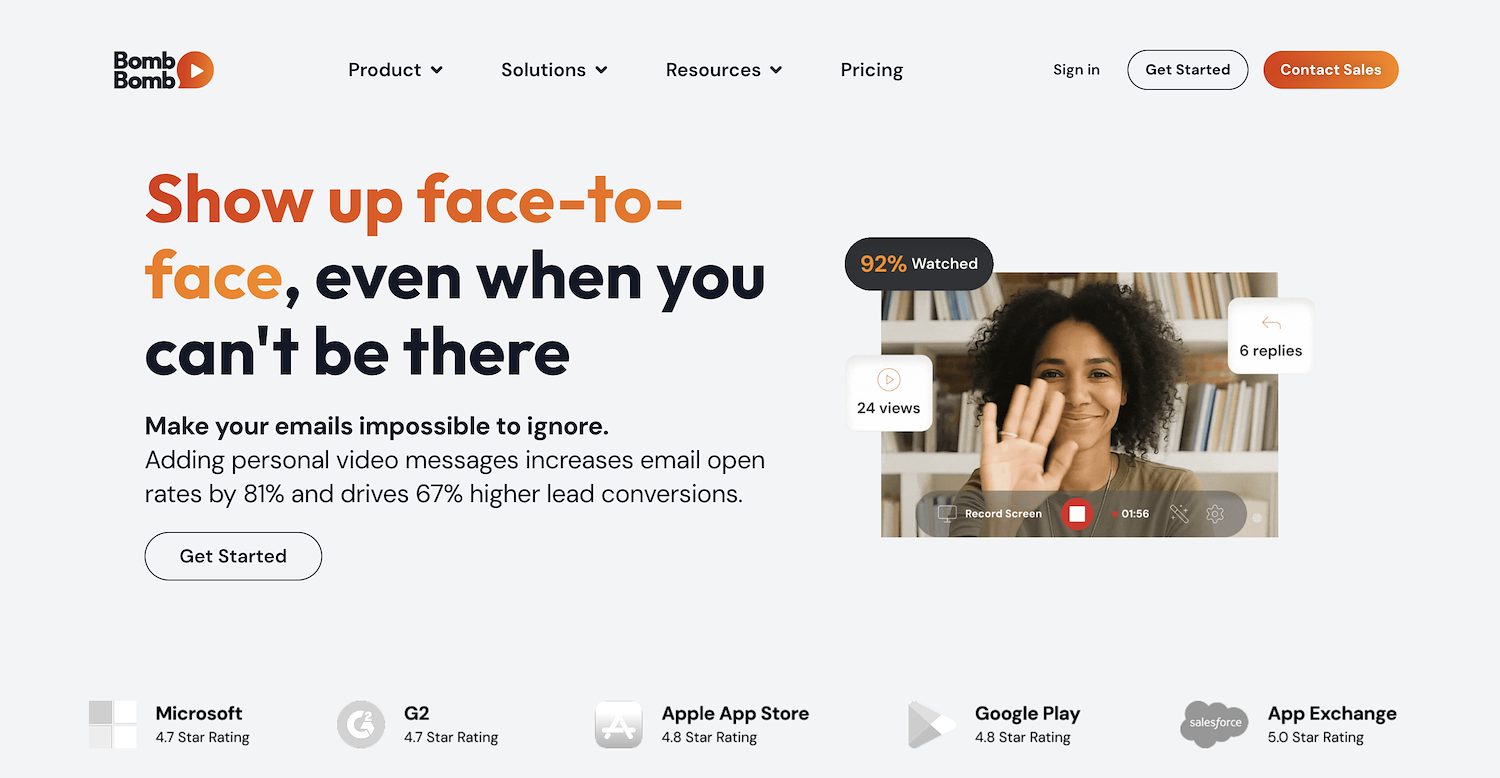
BombBomb is a platform for video messages. It lets users record, send, and track personal videos inside emails to create face-to-face communication at scale. The tool serves sales, marketing, and support teams.
Users embed videos to boost response rates and shorten sales cycles. The goal is to replace static emails with videos that drive action and reduce the touches needed to close deals.
BombBomb's Main Features
- Offers in-browser video editing to trim, stitch, and polish clips without training.
- Automates outreach campaigns using smart assignment and fallback logic.
- Delivers branded video player pages with calls-to-action to direct viewer next steps.
- Provides a single dashboard to track views, engagement, and overall team performance.
How BombBomb Compares to Windsor
Average Review Score: 4.7/5 stars based on 583 G2 reviews.
- BombBomb allows users to send personal videos directly within emails to build stronger connections. Windsor, in contrast, is a data aggregation tool and lacks video messaging capabilities.
- The tool provides in-browser video editing, allowing users to polish clips without extra software. Windsor is an analytics platform and does not include video editing functions.
- Users can create branded video player pages with calls-to-action to direct viewers. This feature is specific to video engagement, unlike Windsor, which compiles performance data into a dashboard.
- BombBomb tracks engagement for each video recipient, giving detailed interaction data. Windsor's analytics are broader, focusing on overall marketing campaign performance instead of individual content views.
BombBomb's Limitations Compared to Windsor
- BombBomb does not consolidate data from multiple marketing channels. Windsor, in contrast, creates a single dashboard from various sources, which offers a complete overview of performance beyond just video metrics.
- It lacks marketing attribution models to connect campaign spend directly to revenue. For teams that need to prove ROI, Windsor provides a clearer financial picture of marketing efforts, a feature absent in BombBomb.
- The platform's focus on video metrics can be a limitation for some users. Windsor analyzes data across different channels like paid search and social media, which provides a more holistic view of the customer journey.
Pricing and Cost-Effectiveness
Windsor's paid plans start at $19 per month and are based on data sources. Specific pricing for BombBomb is not listed; check BombBomb's official website for the most accurate information.
4) Hippo Video
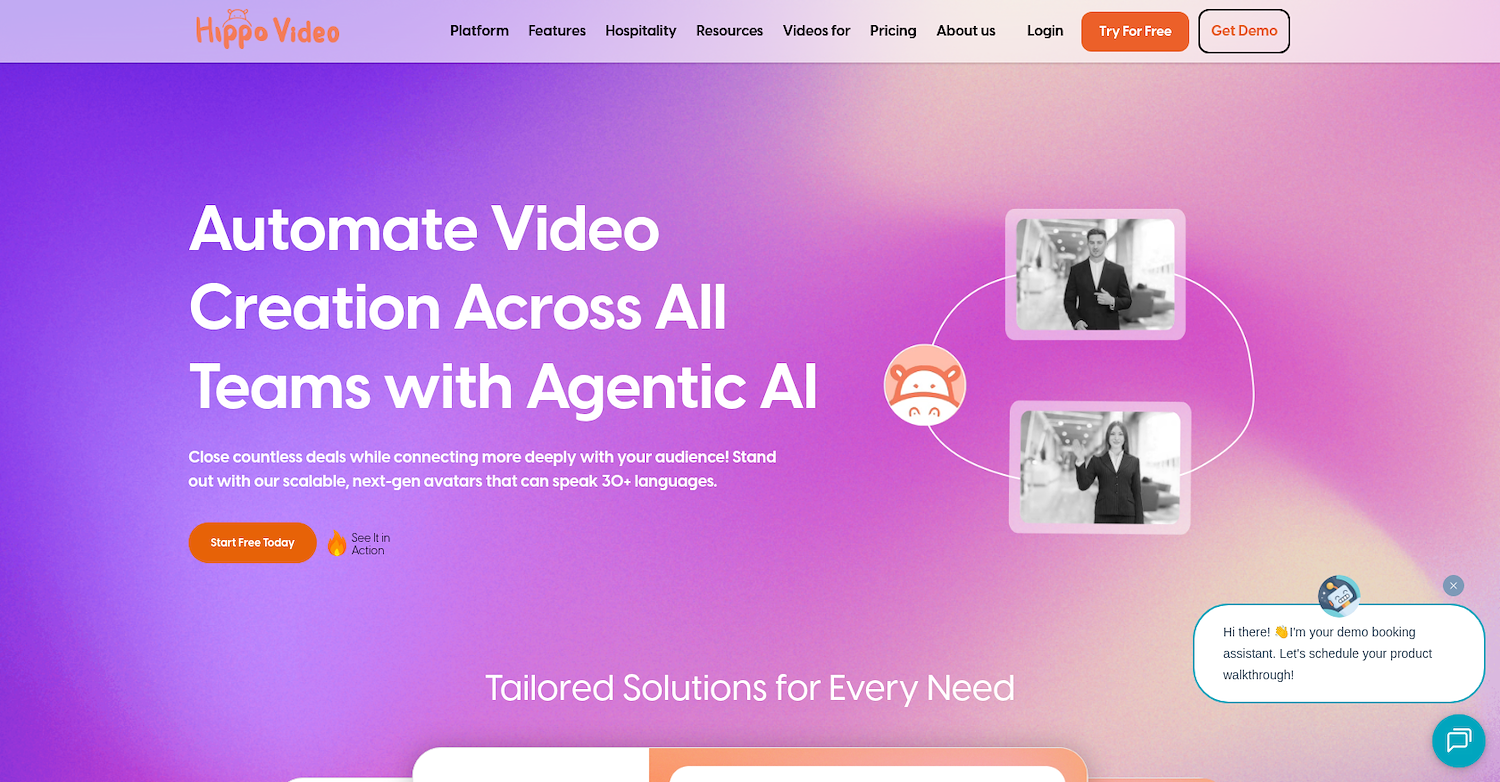
Hippo Video is a video customer experience platform. It helps businesses connect with customers through personalized videos across the sales and marketing funnel. Teams use it for video outreach, lead generation campaigns, and customer support tutorials.
The platform supports video creation and distribution at scale, with tools to track audience engagement.
Hippo Video's Main Features
- Converts text, documents, or prompts into videos with AI avatars, scripts, and scenes in over 30 languages.
- Creates a digital twin of a user that mirrors their voice and style to generate personalized videos for demos or support.
- Builds large-scale video campaigns with interactive elements like polls, quizzes, and calls-to-action to engage viewers.
- Offers an SDK and API to embed video creation, editing, and analytics tools directly into other applications.
How Hippo Video Compares to Windsor
Average Review Score: 4.5/5 stars based on 734 G2 reviews.
- Hippo Video uses AI to create videos from text with avatars and scripts, a function Windsor does not have as it focuses on data aggregation.
- The tool generates personalized videos using a digital twin of a user's voice and style, while Windsor's platform is built for performance analytics, not video creation.
- It adds interactive elements like polls and calls-to-action into videos, which provides more specific engagement data than the broad metrics Windsor compiles.
- The platform offers an SDK and API to embed video tools into other applications, whereas Windsor's integrations pull data into its own dashboard.
Hippo Video's Limitations Compared to Windsor
Hippo Video's analytics focus only on video engagement. For teams that need a wider view, Windsor offers a more complete picture because it combines data from various marketing sources like paid ads and social media.
The platform does not have marketing attribution models that connect campaign spending to revenue. Windsor, in contrast, helps teams measure the financial impact of their efforts because it links campaign data directly to sales outcomes.
Its main purpose is video creation, not multi-channel data analysis. This specific focus can be a limitation for users who require the comprehensive marketing performance overview that Windsor provides across different channels.
Pricing and Cost-Effectiveness
Both tools provide a free plan. Windsor's paid plans start at $19 per month and scale with data sources, while Hippo Video's Pro plan costs $20. Windsor is cost-effective for teams needing many users but few data sources, whereas Hippo Video's model benefits those prioritizing video features.
5) Dubb
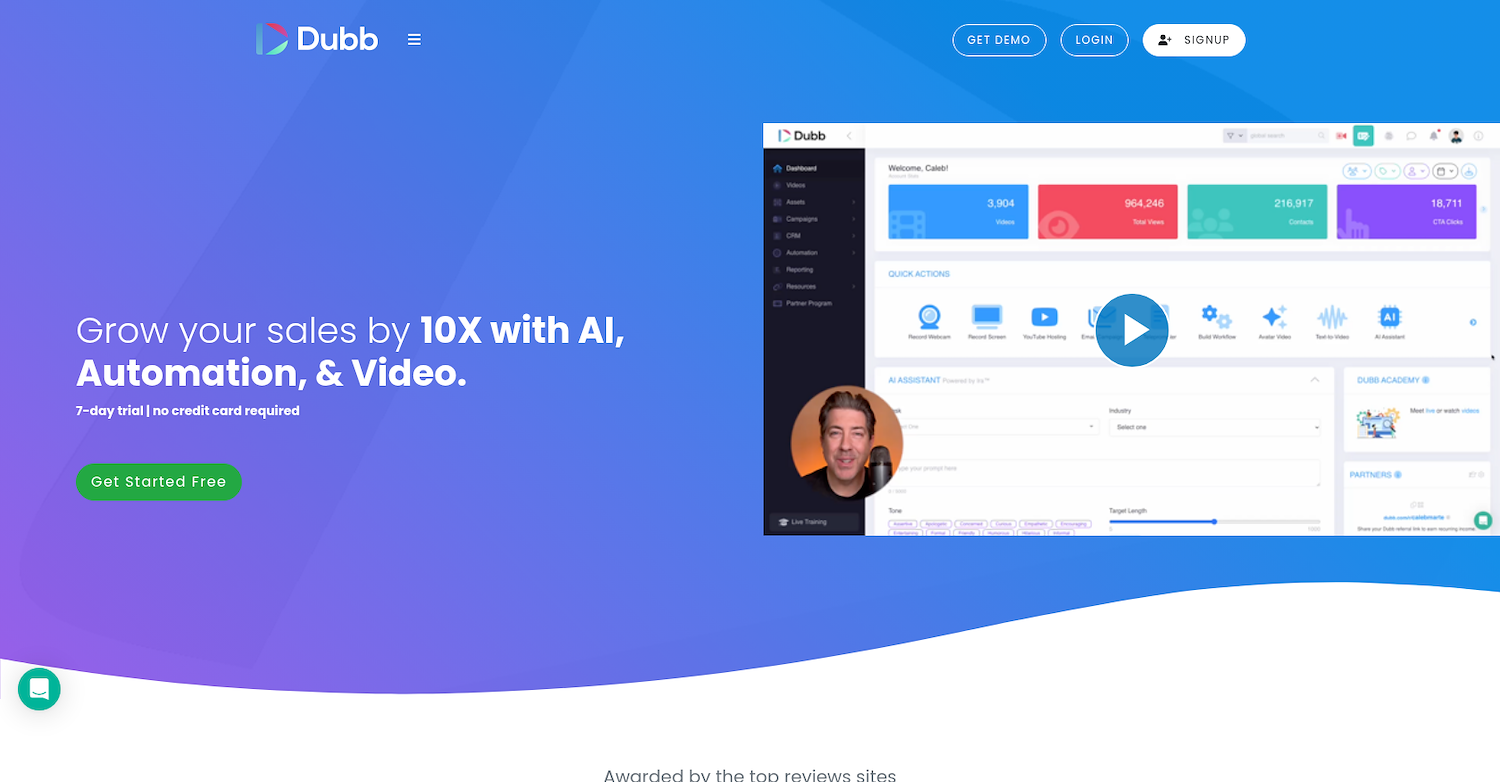
Dubb is a video platform for sales and marketing teams. It allows users to record and share videos from desktop or mobile devices. The platform helps with personalized outreach through video emails and text messages. It also provides real-time notifications to track results.
Teams use it to connect with prospects, book meetings, and generate leads with video landing pages. The system automates follow-up communication to support sales cycles.
Dubb's Main Features
- Offers an AI suite with assistants for sales recommendations (SIA), video generation from text (Vera), and performance analysis (Caira).
- Records screen and webcam video through a Chrome extension, desktop app, or a mobile app with a built-in teleprompter.
- Distributes personalized videos via one-to-one email, SMS, and LinkedIn, and supports broadcast campaigns with marketing automation.
- Provides real-time activity notifications for opens, clicks, and views, along with team-level productivity dashboards.
How Dubb Compares to Windsor
Average Review Score: 4.6/5 stars based on 555 G2 reviews.
- Dubb includes an AI suite for sales recommendations and video generation from text, while Windsor is a data analytics platform without content creation tools.
- It offers video recording from desktop and mobile with a built-in teleprompter, a feature not present in Windsor, which pulls data from existing marketing sources.
- The platform distributes personalized videos through email, SMS, and LinkedIn. Windsor's function is to aggregate performance data from these channels, not to send content.
- Dubb provides real-time notifications for individual video opens and clicks, which gives more specific recipient tracking than Windsor's broader campaign performance reports.
Dubb's Limitations Compared to Windsor
- Dubb focuses on video analytics and does not combine data from multiple marketing channels. Windsor provides a more complete performance overview because it pulls data from sources like paid ads and social media into a single dashboard.
- The platform lacks marketing attribution models that connect campaign spend to revenue. For teams that need to prove ROI, Windsor offers a clearer financial picture of marketing efforts, a feature absent in Dubb.
- Its primary function is video communication, not multi-channel data analysis. This specific focus might be a drawback for teams that need the comprehensive marketing performance view that Windsor provides across different channels.
Pricing and Cost-Effectiveness
Windsor's paid plans start at $19 per month, based on data sources, while Dubb's Pro plan is $59 per month. Windsor offers a more cost-effective entry for data aggregation, while Dubb's pricing aligns with its video sales features. For full details, visit Dubb's official website.
Final Recommendation: Try 11x
If your sales team explores digital workers, 11x is a relevant option. The platform provides autonomous AI agents for tasks like lead research and data entry. This helps sales operations automate functions so staff can focus on deal closure.
With 11x, we use AI to manage the sales process. Our agent Alice identifies accounts, gathers data, and handles outreach. Julian then qualifies leads and books meetings. The platform combines tools for intent data and email warmup, removing the need for separate solutions.
Book a demo to see 11x in action.
6) Sendspark

Sendspark is a video platform for sales teams. It lets users record and share personalized videos to connect with customers. The tool creates these videos at scale with dynamic variables like a viewer's name or company logo to build trust and increase response rates.
Teams use it for sales outreach, new customer introductions, and support messages to stand out in an inbox.
Sendspark's Main Features
- Uses AI to personalize a single base video at scale by cloning the presenter’s voice and inserting each prospect’s name.
- Allows users to stitch a new introduction onto a pre-recorded video for rapid personalization.
- Builds custom landing pages that include branded text, calls-to-action, and embedded calendars next to the video.
- Offers on-screen scripts and a teleprompter to provide guidance while recording.
How Sendspark Compares to Windsor
Average Review Score: 4.7/5 stars based on 370 G2 reviews.
- Sendspark uses AI to clone a presenter’s voice and personalize a single video for many prospects. Windsor, in contrast, is an analytics platform and lacks any video creation tools.
- It allows users to stitch a new introduction onto a pre-recorded video for rapid personalization, a feature not found in Windsor's data-focused platform.
- The tool builds custom landing pages with branded text and calls-to-action next to the video. Windsor's platform is a data dashboard and does not create external-facing content pages.
- Users get on-screen scripts and a teleprompter to provide guidance while recording. Windsor lacks content creation aids as it is designed for data aggregation, not video production.
Sendspark's Limitations Compared to Windsor
Sendspark provides analytics for its video content but does not pull data from other marketing platforms. Windsor, in contrast, offers a unified view by connecting to sources like Google Ads and Facebook Ads.
It can be difficult to measure the direct financial return of video campaigns with the tool. Windsor, in comparison, includes attribution models that link marketing activities directly to revenue.
The platform's main value is in communication, which is different from Windsor's focus on data aggregation. This might be a drawback for teams that need a single tool for cross-channel performance analysis.
Pricing and Cost-Effectiveness
While we've covered key features and use cases in this comparison, pricing models can vary significantly between tools. For the most accurate and up-to-date pricing information, we recommend visiting Sendspark's official website.
7) Bonjoro
Bonjoro is a platform to send personalized video messages to customers. Teams use it to record and share videos from desktop or mobile, a practice that helps build relationships with new leads and current clients.
The tool's purpose is to replace plain text emails with personal videos to increase customer loyalty. Sales and success teams use it to welcome new users, follow up on leads, and convert trial users into paying customers.
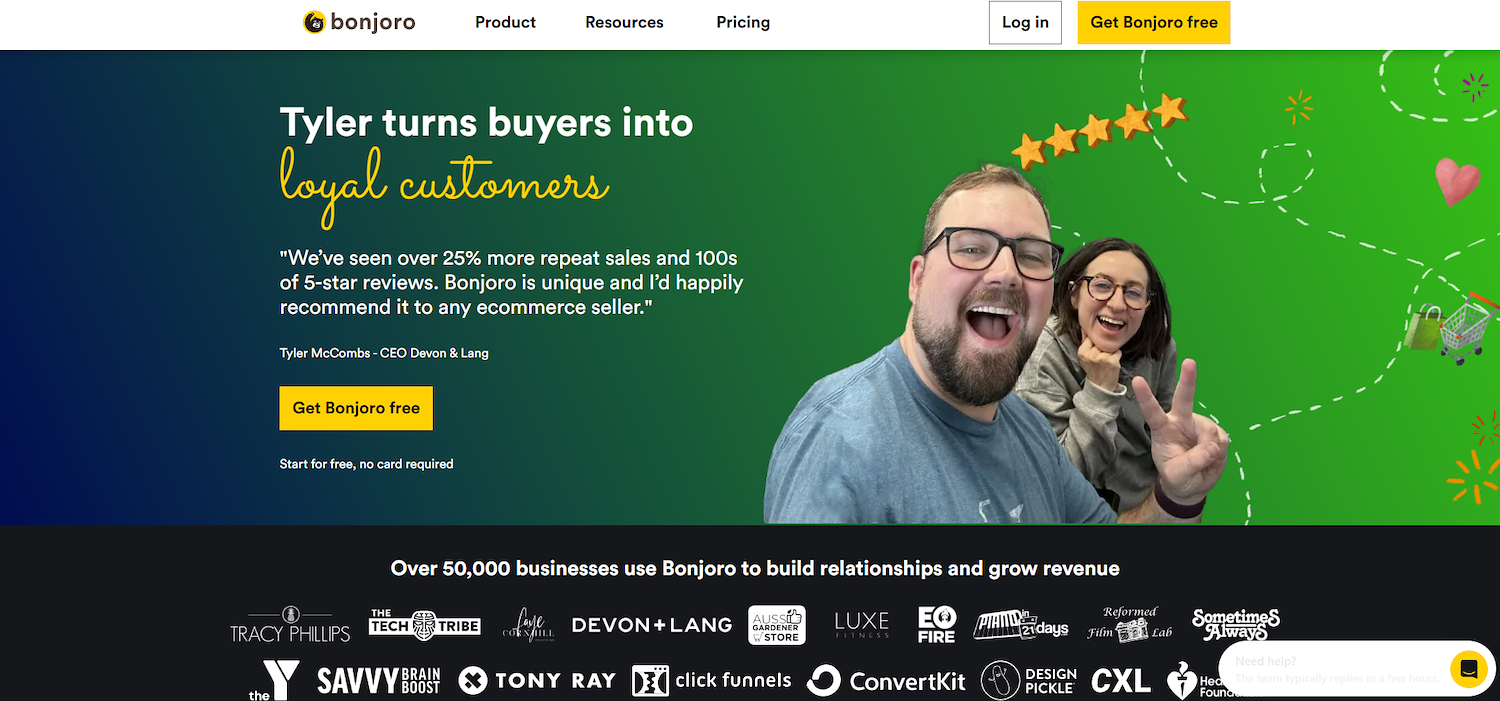
Bonjoro is a platform for personalized video messages. Teams record and share videos from desktop or mobile to connect with new leads and current clients. The tool replaces plain text emails with personal videos to build customer loyalty.
Sales and success teams use it to welcome new users, follow up on leads, and convert trial accounts into paid subscriptions.
Bonjoro's Main Features
- Users can record or upload personal videos from desktop or mobile and use custom templates with branding and calls-to-action.
- The platform provides one-click links to collect video or text testimonials and displays them using embeddable “Wall of Love” widgets.
- It includes a screen recording function to create educational and onboarding videos for customers.
- The tool connects with CRMs to trigger automated video tasks based on events like a new lead or purchase.
How Bonjoro Compares to Windsor
Average Review Score: 4.8/5 stars based on 57 G2 reviews.
- Bonjoro allows users to send personal video messages to build customer relationships. Windsor, in contrast, is a data aggregation tool and lacks direct video communication features.
- The platform provides one-click links to collect video testimonials from customers. This offers a simple way to gather social proof, a function not available in Windsor's analytics-focused platform.
- It includes a screen recording function to create product demos or support tutorials. Windsor is an analytics tool and does not have content creation capabilities like screen recording.
- This tool connects with CRMs to trigger video tasks based on customer events, such as a new purchase. While Windsor also integrates with CRMs, it pulls data for analysis instead of pushing automated, event-based communications.
Bonjoro's Limitations Compared to Windsor
- Bonjoro does not combine data from different marketing channels. Windsor provides a unified dashboard with data from paid ads and social media, offering a more complete performance overview for marketing teams.
- The tool lacks marketing attribution models. This can make it difficult to measure the financial return of campaigns. Windsor, in comparison, connects marketing spend directly to revenue, showing a clearer ROI.
- Its analytics are specific to video engagement. Windsor, however, analyzes the full customer journey. This gives a broader perspective on how different marketing activities contribute to overall business goals.
Pricing and Cost-Effectiveness
Both tools offer a free plan, and their starter tiers are identically priced at $19 per month. Windsor's pricing scales based on data sources, while Bonjoro's plans increase more gradually to $39 and $79 per month, suiting teams focused on video features over data aggregation.
8) OneMob

OneMob is a video engagement platform for sales and marketing teams. It lets users create and share personalized videos to connect with prospects and customers. The system supports video messages through email and other channels.
Use cases include sales outreach, customer onboarding, and internal training. The platform helps make business interactions more personal and effective with video.
OneMob's Main Features
- Creates custom microsites with templates and tagging options to showcase content.
- Records video using mobile, web, and screen recorders with a built-in script teleprompter and editing tools.
- Manages content with features for video approvals and tracks audience engagement.
- Integrates with CRMs like Salesforce and HubSpot and offers native plugins for email and sales tools like Gmail and Outreach.
How OneMob Compares to Windsor
Average Review Score: 4.9/5 stars based on 143 G2 reviews.
- OneMob creates custom microsites with templates to showcase content. This is different from Windsor, which functions as an internal data dashboard.
- It includes mobile and web recorders with a built-in teleprompter. These are content creation tools that Windsor's analytics platform does not provide.
- The platform has content management features like video approvals. This gives teams control over messaging, a function absent in Windsor's data aggregation model.
- OneMob provides native plugins for email tools like Gmail and Outreach. This lets users share content from their workflow, unlike Windsor's model that pulls data into a separate platform.
OneMob's Limitations Compared to Windsor
- OneMob provides analytics only for its video and microsite content, which can sometimes create data silos. Windsor, in contrast, breaks down these silos by integrating performance data from various marketing channels into a single dashboard.
- It can be difficult to connect marketing spend to sales outcomes using the platform's analytics. Windsor, however, includes attribution models that directly link campaign costs to revenue, which helps teams calculate ROI.
- The tool's analytics focus on content engagement metrics like views and clicks. This is different from Windsor, which analyzes broader business metrics across the entire customer journey, not just interactions with a single piece of content.
Pricing and Cost-Effectiveness
Both tools offer a free plan. Windsor's paid plans start at $19 per month based on data sources, while OneMob's Pro plan is $25 per user per month. Windsor is more cost-effective for large teams with few data sources, whereas OneMob's per-user model suits smaller teams focused on video engagement. For full details, visit OneMob's official website.
9) Covideo
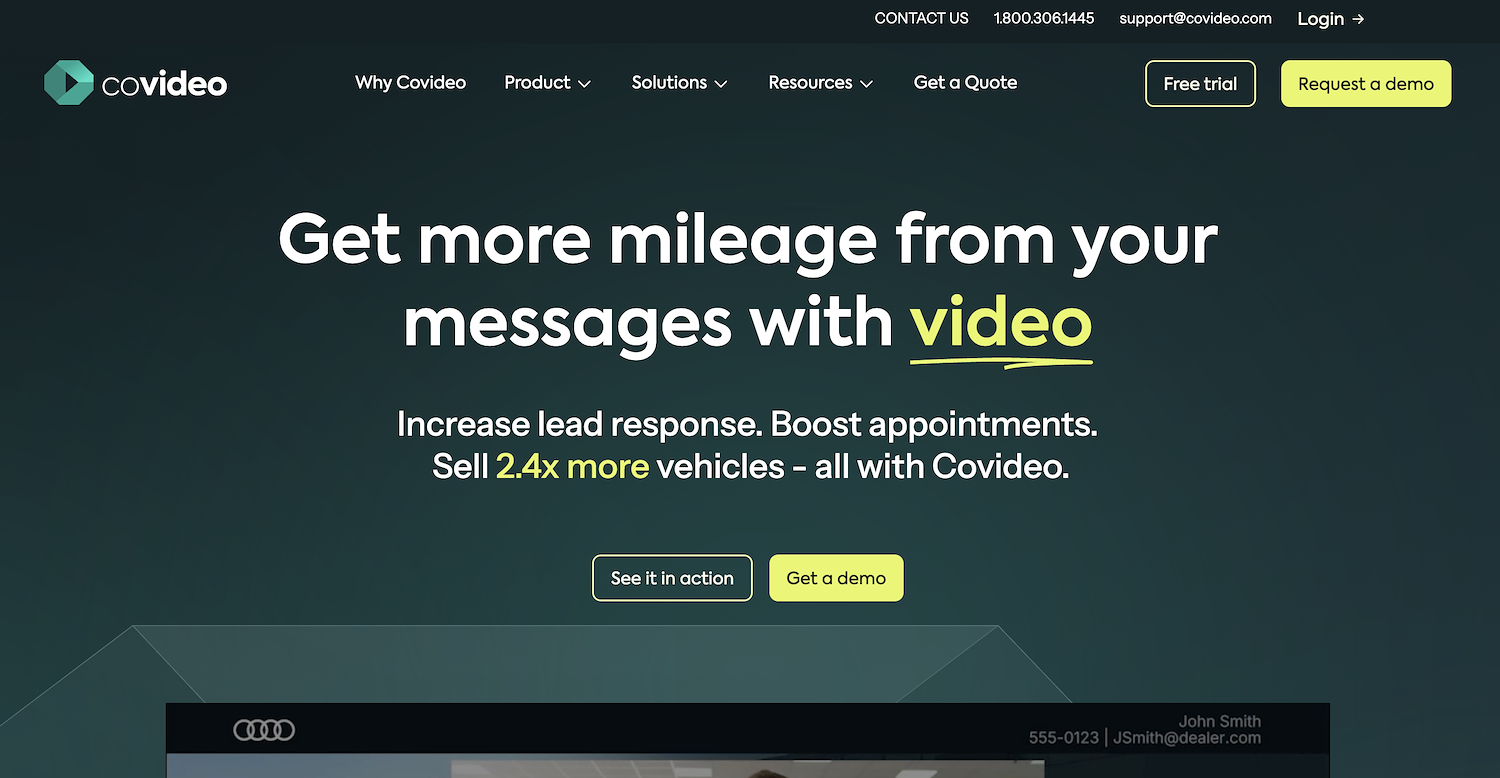
Covideo is a video message platform that allows businesses to record and send personal videos. Sales, marketing, and service teams use it to connect with customers through lead follow-up, appointment reminders, and support messages.
The tool replaces text-based emails with video to build relationships. It is designed to produce personalized videos at scale for business communication.
Covideo's Main Features
- Embeds videos directly into emails, text messages, CRMs, and social media platforms.
- Offers custom video landing pages with calls-to-action and website overlays.
- Tracks every open and click on an analytics dashboard to provide insights on email campaigns.
- Allows for private video uploads to control content distribution.
How Covideo Compares to Windsor
Average Review Score: 4.8/5 stars based on 69 G2 reviews.
- Covideo embeds videos directly into emails and text messages. This allows for personal communication, a feature Windsor does not offer as it focuses on data aggregation.
- It creates custom video landing pages with calls-to-action. This is different from Windsor, which provides an internal data dashboard instead of external-facing content pages.
- The tool tracks every open and click for each video. This provides more specific engagement insights compared to Windsor, which reports on broader campaign performance metrics.
- The platform allows for private video uploads to control content distribution. Windsor is a data aggregation tool and does not have features for managing or hosting video content.
Covideo's Limitations Compared to Windsor
- Covideo's analytics focus only on video performance, which can create information silos. Windsor, in contrast, integrates data from various marketing channels, offering a more complete performance overview.
- The platform lacks marketing attribution models, making it difficult to measure the financial return on video campaigns. In comparison, Windsor connects marketing spend to revenue, which provides a clearer picture of ROI.
- Its analytics center on content engagement metrics like views and clicks. This is different from Windsor, which analyzes the full customer journey to show how all marketing efforts contribute to business goals.
Pricing and Cost-Effectiveness
While we've covered key features and use cases in this comparison, pricing models can vary significantly between tools. For the most accurate and up-to-date pricing information, we recommend visiting Covideo's official website.
10) VideoAsk
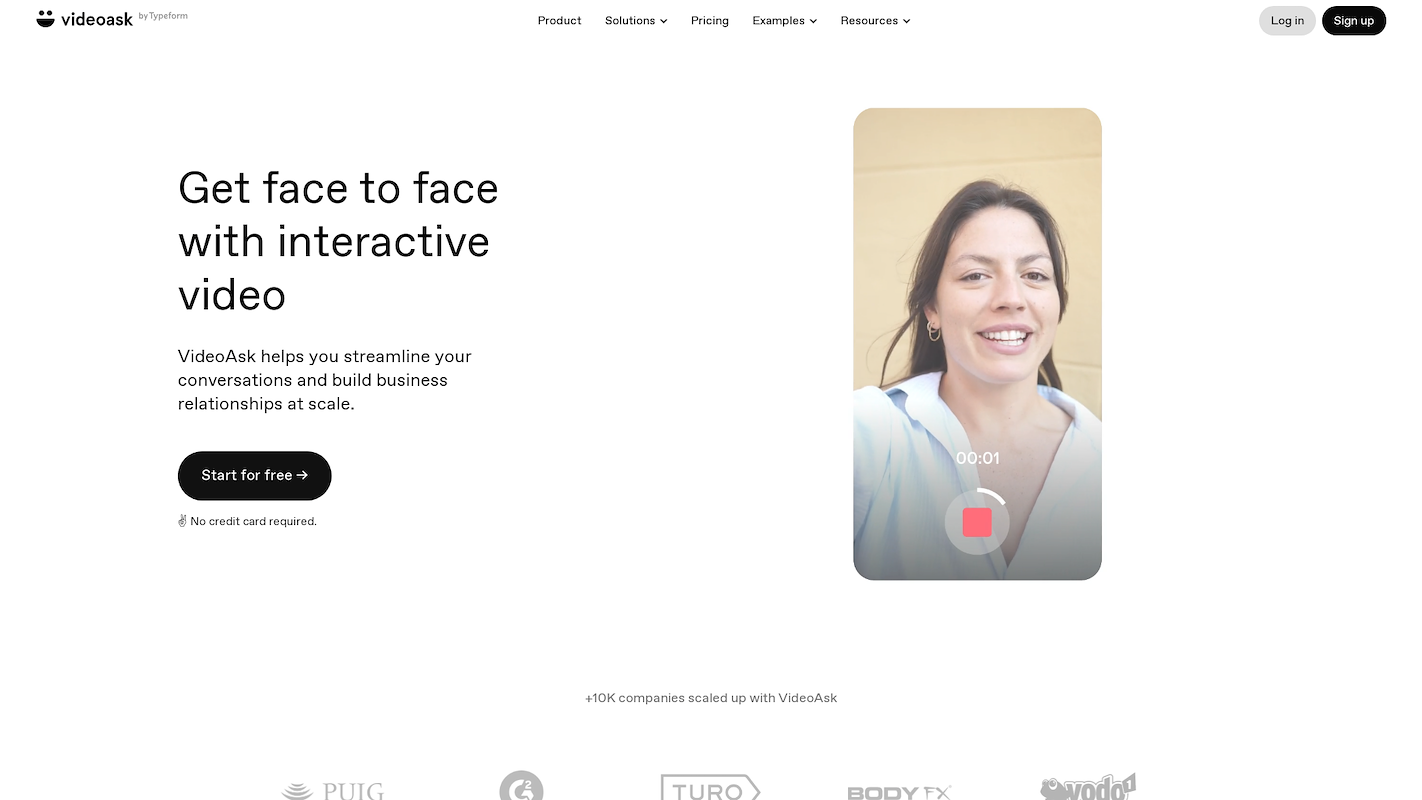
VideoAsk is a platform for face-to-face conversations at scale. It lets businesses replace forms with video chats. Users create a video, ask questions, and collect audience responses through video, audio, or text.
This approach helps with lead qualification, customer feedback, and recruitment through personal, asynchronous interactions.
VideoAsk's Main Features
- Replaces traditional web forms with interactive, face-to-face video conversations.
- Collects audience responses through video, audio, or text inputs.
- Allows users to create a video, ask questions, and build a multi-step flow for asynchronous interactions.
- Supports use cases like lead qualification, customer feedback collection, and candidate recruitment.
How VideoAsk Compares to Windsor
Average Review Score: 4.5/5 stars based on 13 G2 reviews.
- VideoAsk replaces web forms with interactive video conversations, a feature Windsor does not offer as it is an analytics platform.
- It collects audience responses through video, audio, or text, which provides qualitative feedback that Windsor's quantitative data aggregation does not capture.
- The platform allows users to build multi-step conversational flows for asynchronous chats, while Windsor pulls static data into a dashboard without two-way communication.
- Its design supports personal interactions for lead qualification and recruitment; this is different from Windsor, which focuses on broad marketing performance metrics.
VideoAsk's Limitations Compared to Windsor
- The platform's analytics are limited to its own video interactions. This is different from Windsor, which creates a unified dashboard by pulling data from multiple marketing channels like Google Ads and Facebook Ads.
- It does not connect campaign spending to revenue. This can be a drawback for teams that need to measure financial impact. Windsor, in contrast, includes attribution models to provide a clear view of marketing ROI.
- Its main function is to collect qualitative feedback through conversations. This differs from Windsor, which analyzes quantitative data across the full customer journey to provide a broader perspective on performance.
Pricing and Cost-Effectiveness
While we've covered key features and use cases in this comparison, pricing models can vary significantly between tools. For the most accurate and up-to-date pricing information, we recommend visiting VideoAsk's official website.
Which One Should You Go With?
Many variables influence the choice of a Windsor alternative. This guide shared several options to help you find the right fit for your business needs.
If your sales team needs to automate tasks, 11x provides digital workers for lead research and outreach. Its AI agents manage sales functions from prospect identification to meeting setup, which allows your staff to focus on deal closure instead of repetitive work.




